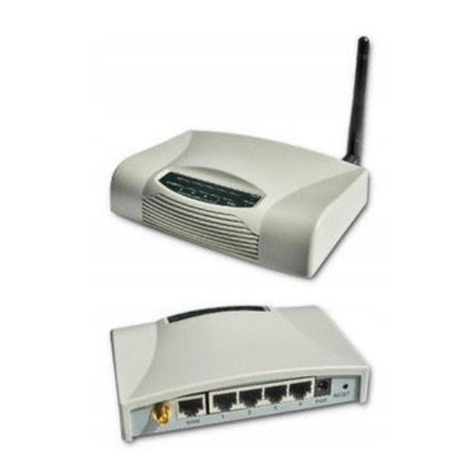MNWAPGR User Manual Copyright © 2005 Minitar Corporation
3
Table of Contents
Chapter 1 Introduction................................................................................4
Functions and Features.................................................................................................... 4
Packing List....................................................................................................................... 6
Chapter 2 Hardware Installation.................................................................7
2.1 Panel Layout............................................................................................................... 7
2.2 Procedure for Hardware Installation........................................................................... 9
Chapter 3 Network Settings and Software Installation ..........................10
3.1 Configuration of the Network Settings of Your Computer......................................... 10
Chapter 4 Configuring the Wireless Broadband Router........................11
4.1 Start-up and Log in.................................................................................................... 12
4.2 Status........................................................................................................................ 13
4.3 Wizard....................................................................................................................... 14
4.4 Basic Setting............................................................................................................. 15
4.4.1 Primary Setup – WAN Type, Virtual Computers ........................................... 15
4.5 Forwarding Rules...................................................................................................... 25
4.5.1 Virtual Server................................................................................................. 26
4.5.2 Special AP..................................................................................................... 27
4.5.3 Miscellaneous Items...................................................................................... 28
4.6 Security Settings....................................................................................................... 29
4.6.1 Packet Filter .................................................................................................. 29
4.6.2 Domain Filter................................................................................................. 34
4.6.3 URL Blocking................................................................................................. 35
4.6.4 MAC Address Control.................................................................................... 37
4.6.5 Miscellaneous Items...................................................................................... 39
4.7 Advanced Settings .................................................................................................... 40
4.7.1 System Time.................................................................................................. 41
4.7.2 System Log ................................................................................................... 42
4.7.3 Dynamic DNS................................................................................................ 43
4.7.4 SNMP Setting................................................................................................ 44
4.7.5 Routing Table ................................................................................................ 45
4.7.6 Schedule Rule............................................................................................... 47
4.8 Toolbox...................................................................................................................... 50
Appendix A TCP/IP Configuration for Windows 95/98...........................55
Appendix B 802.1x Setting .......................................................................60
Appendix C WPA-PSK and WPA..............................................................65
Appendix D FAQ and Troubleshooting ...................................................77
Reset to factory default settings ..................................................................................... 77




























